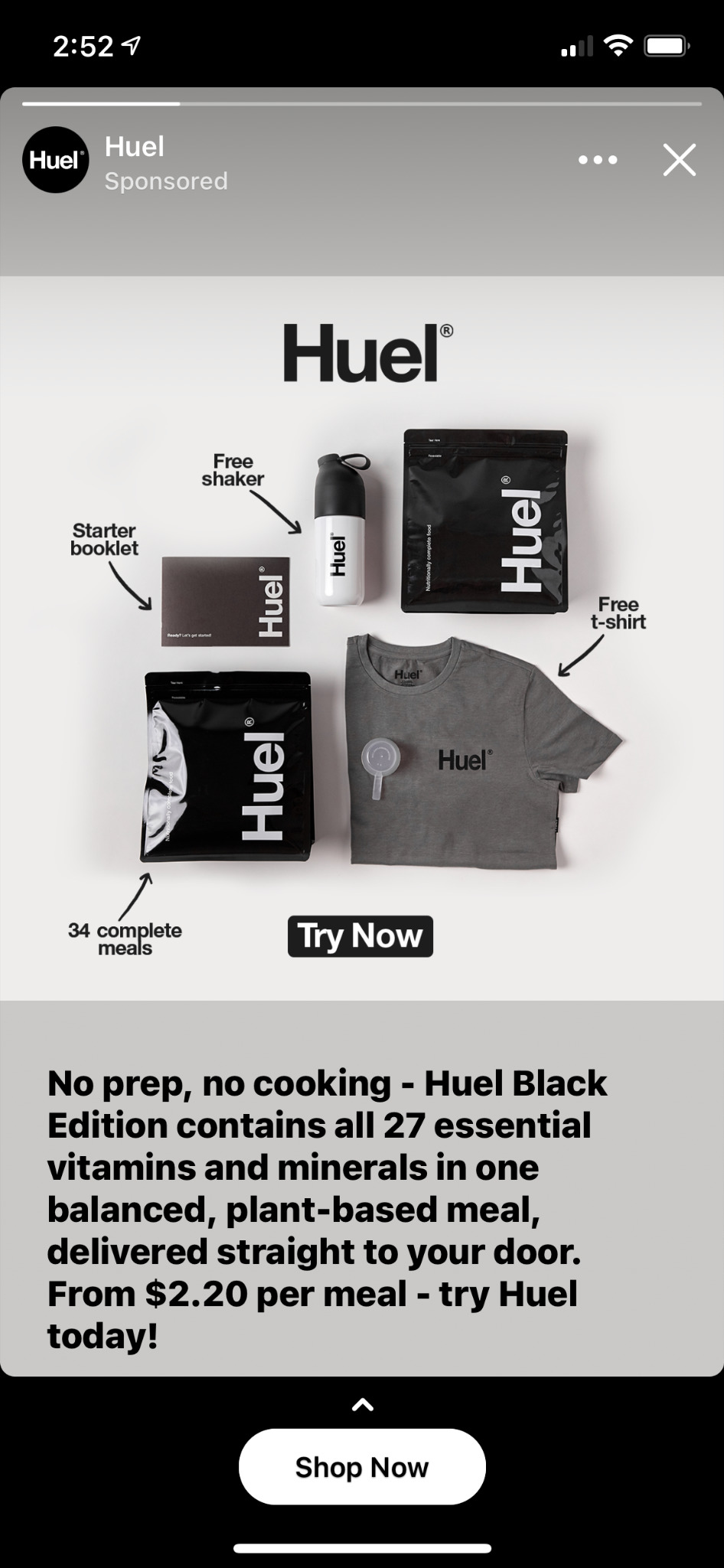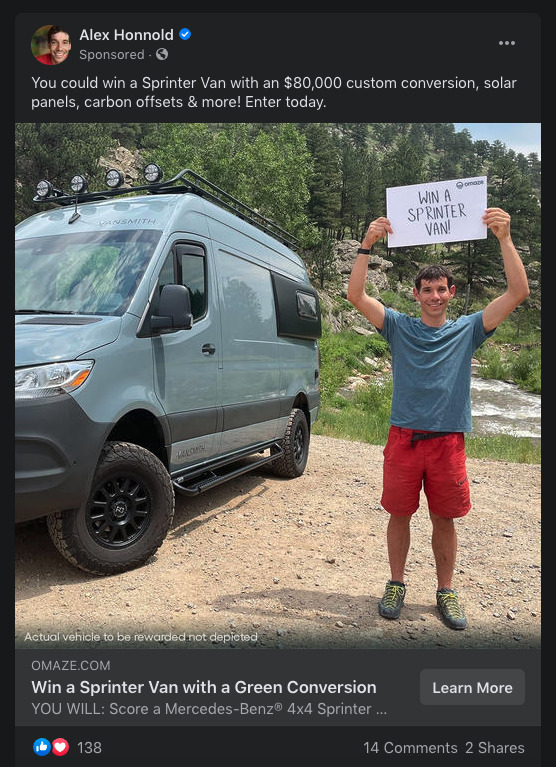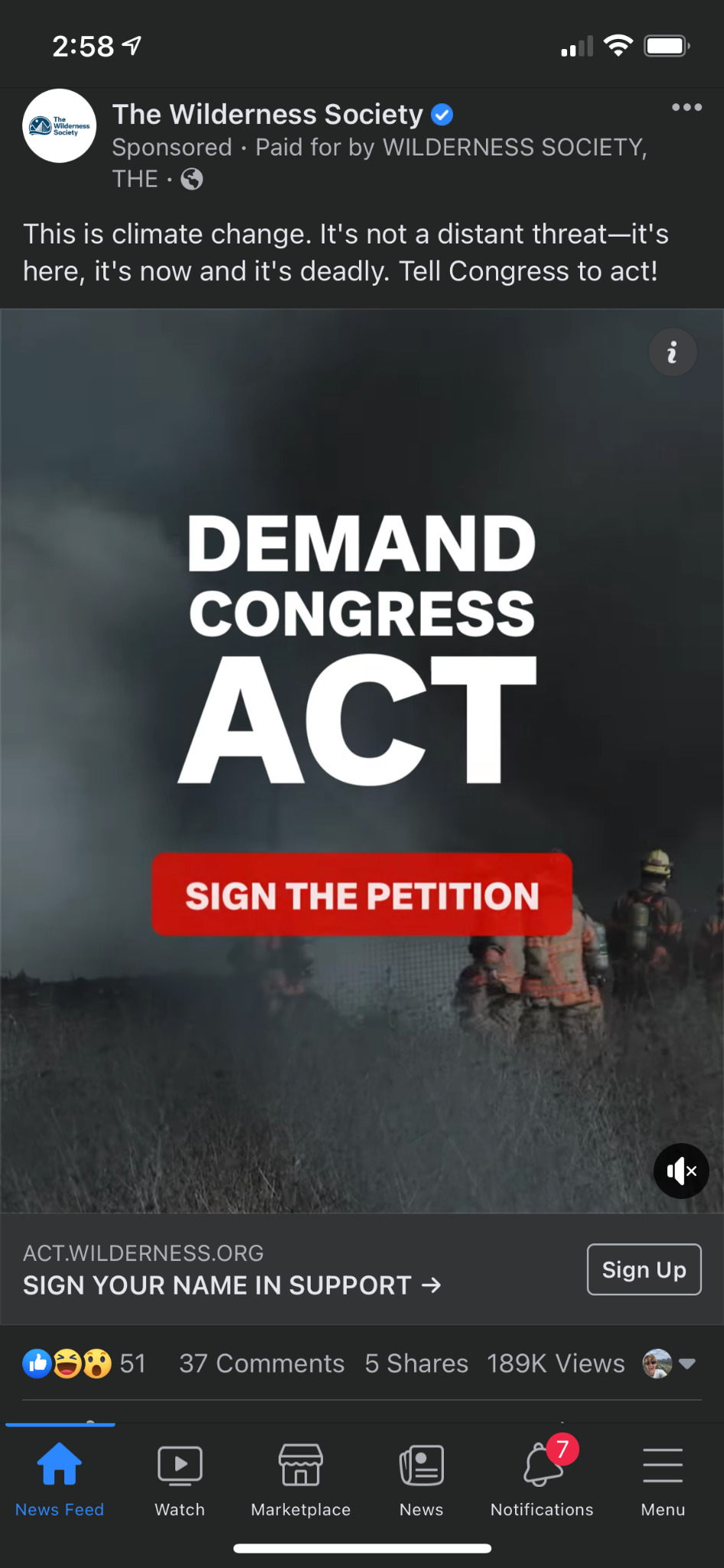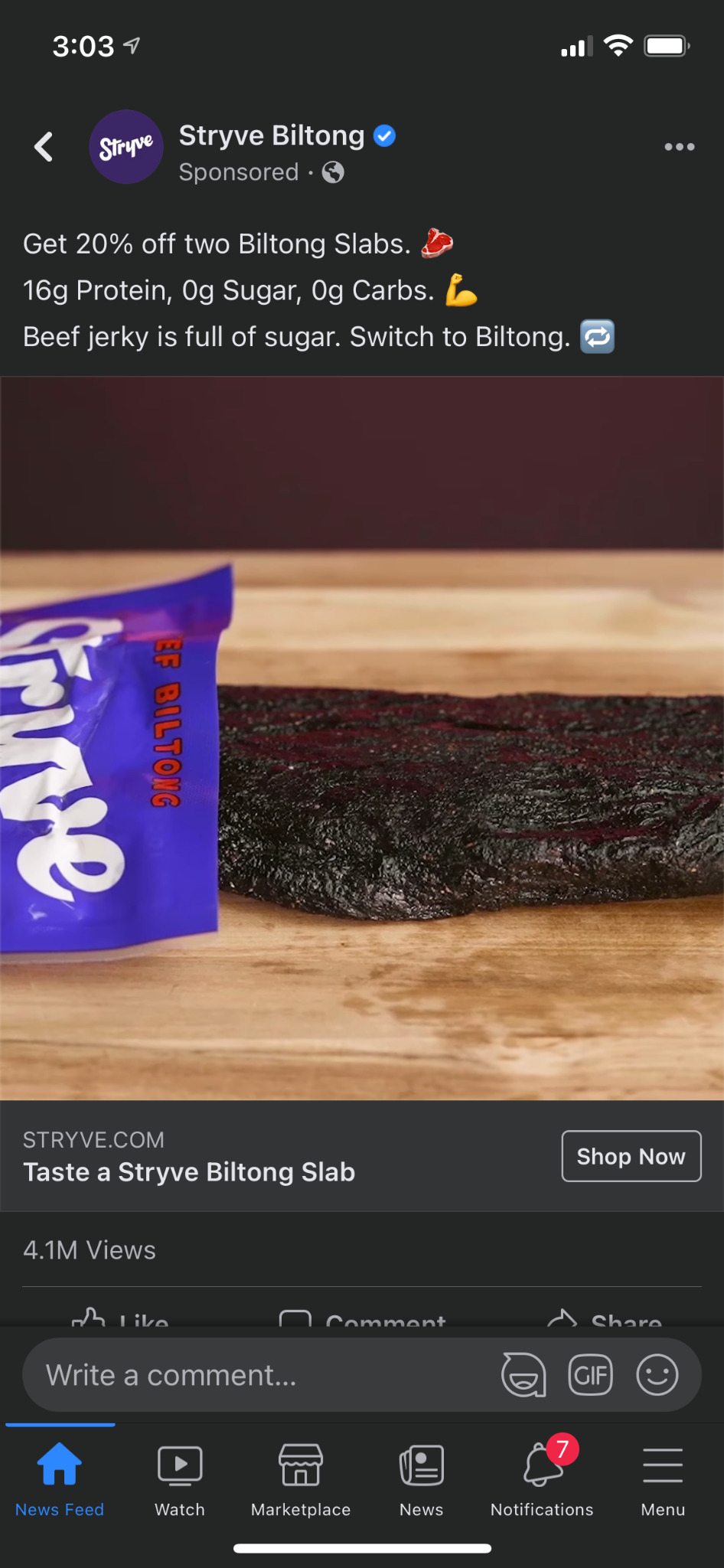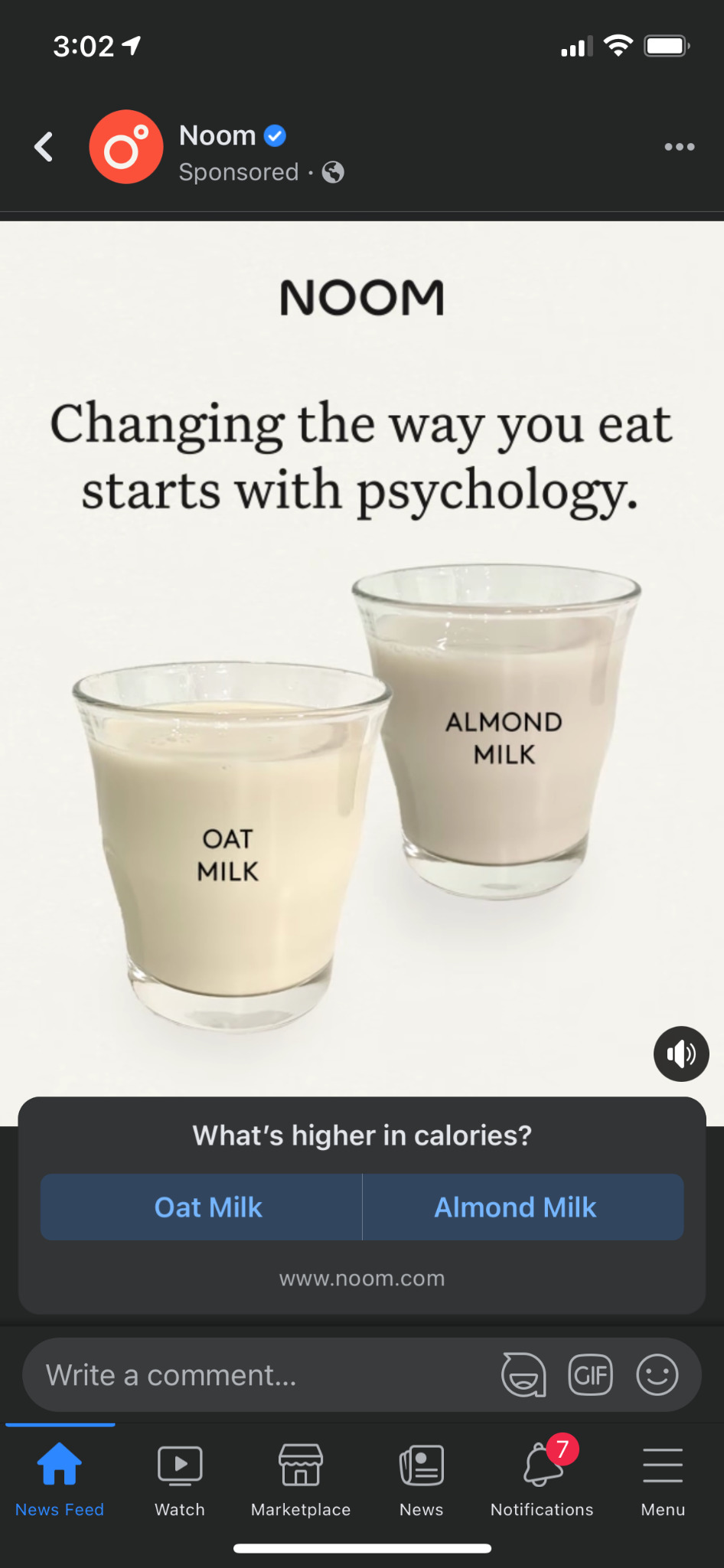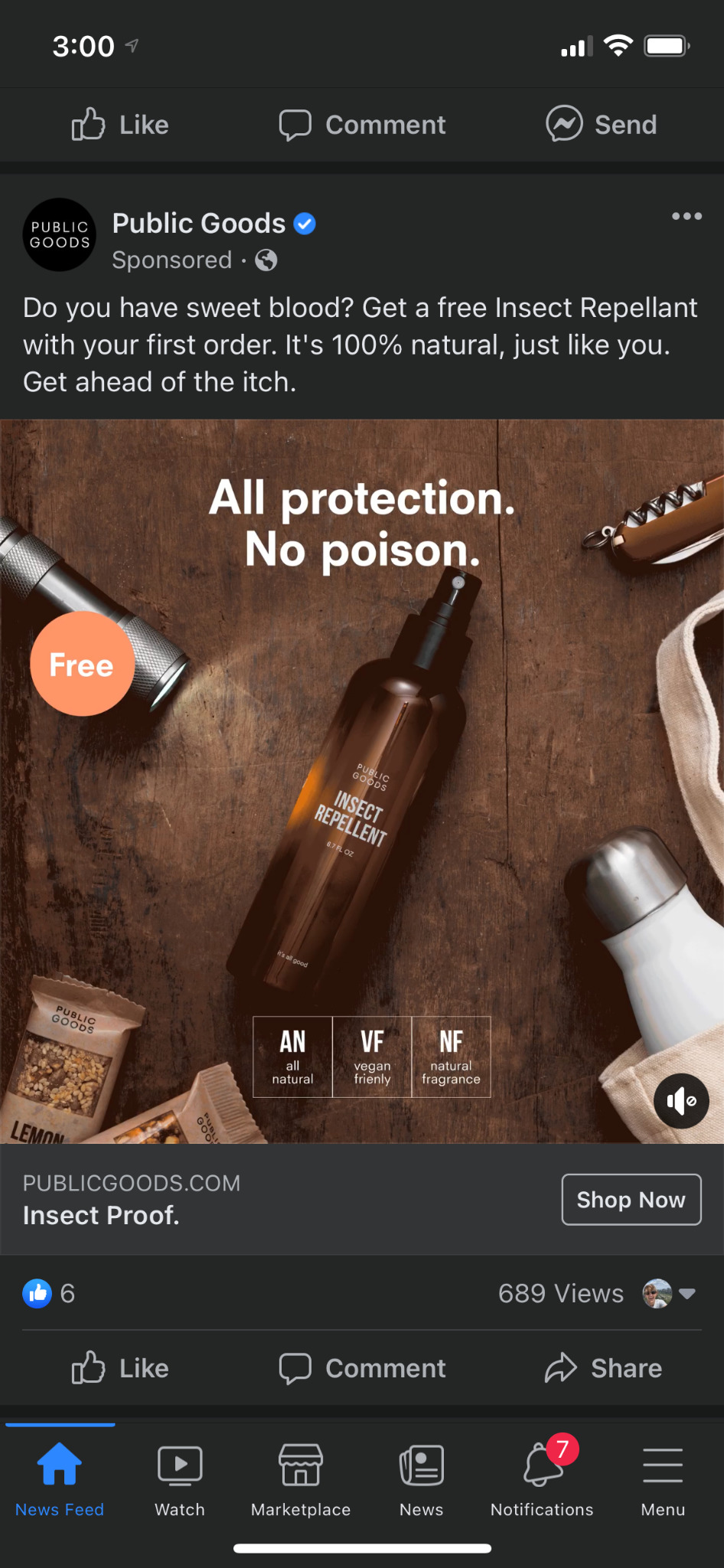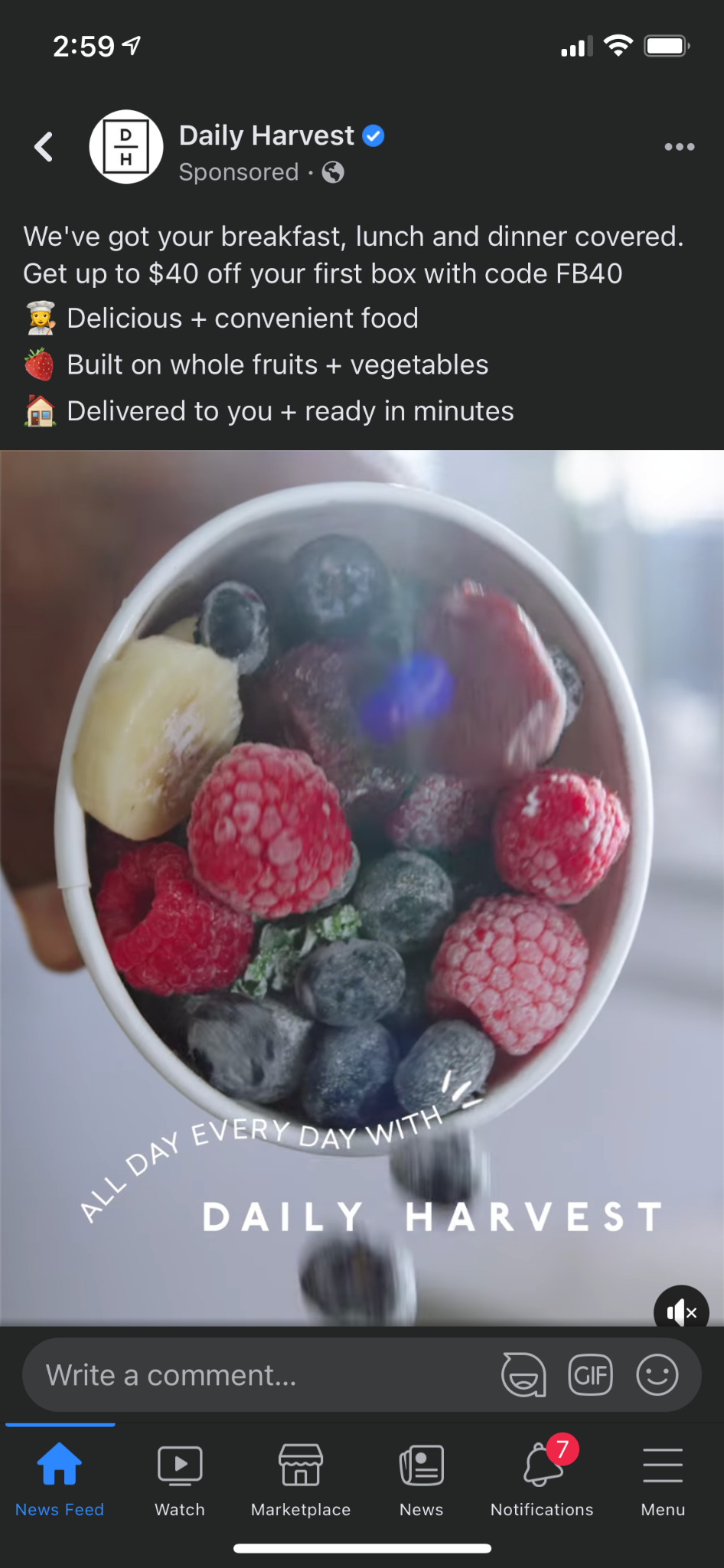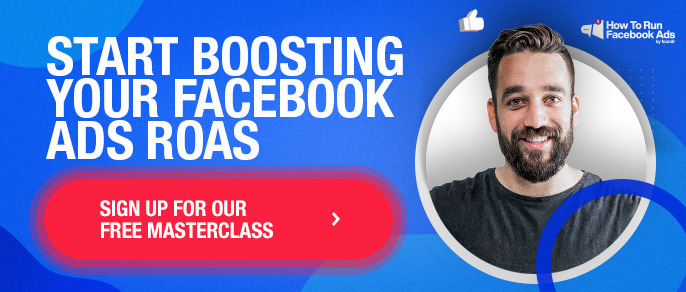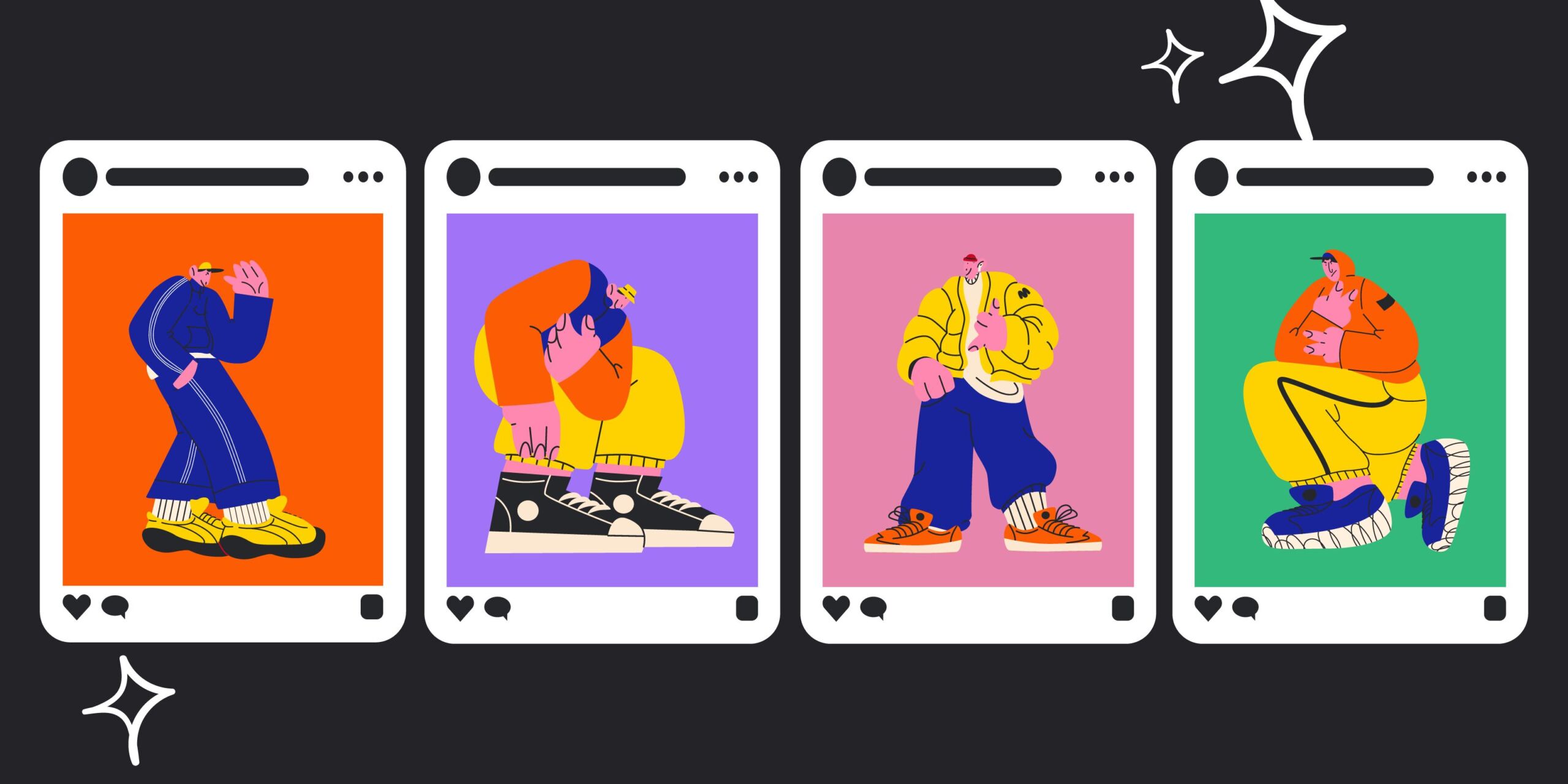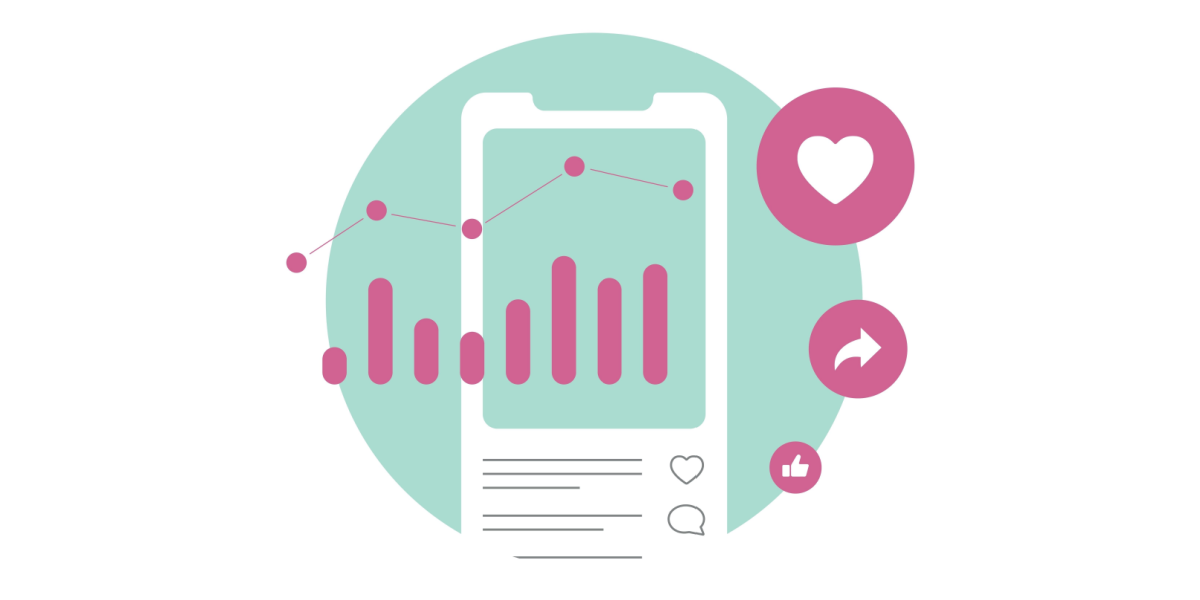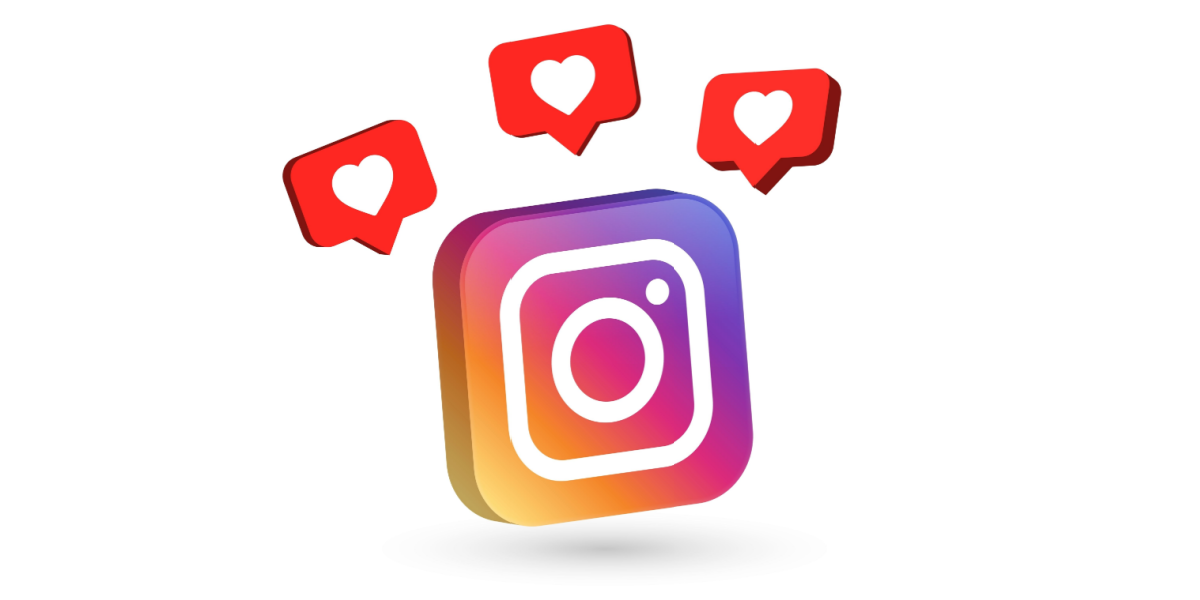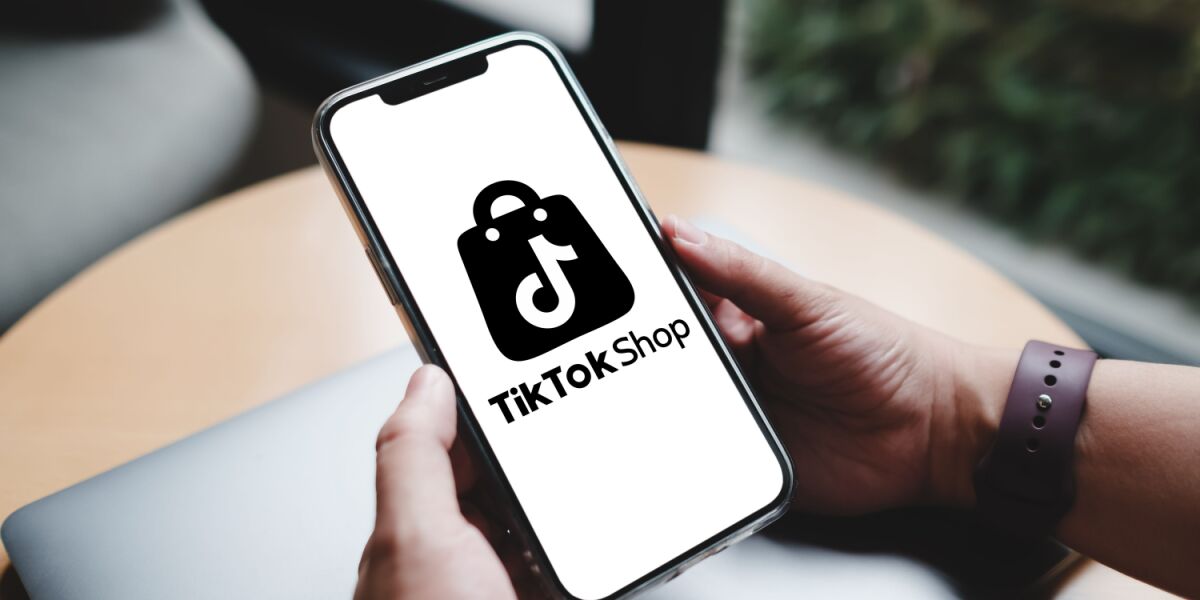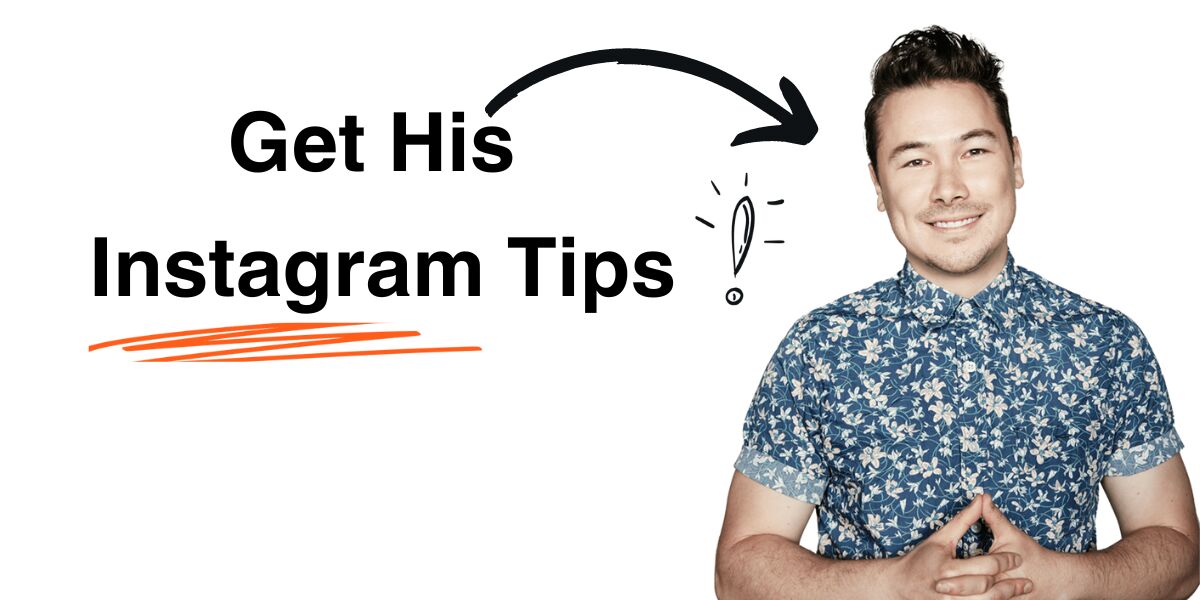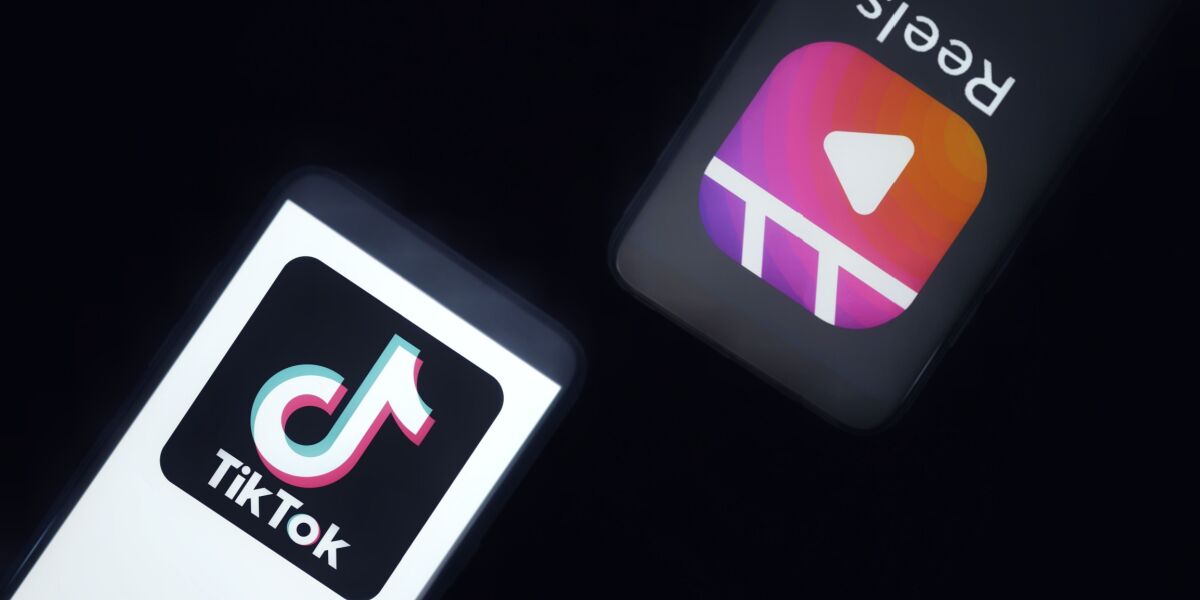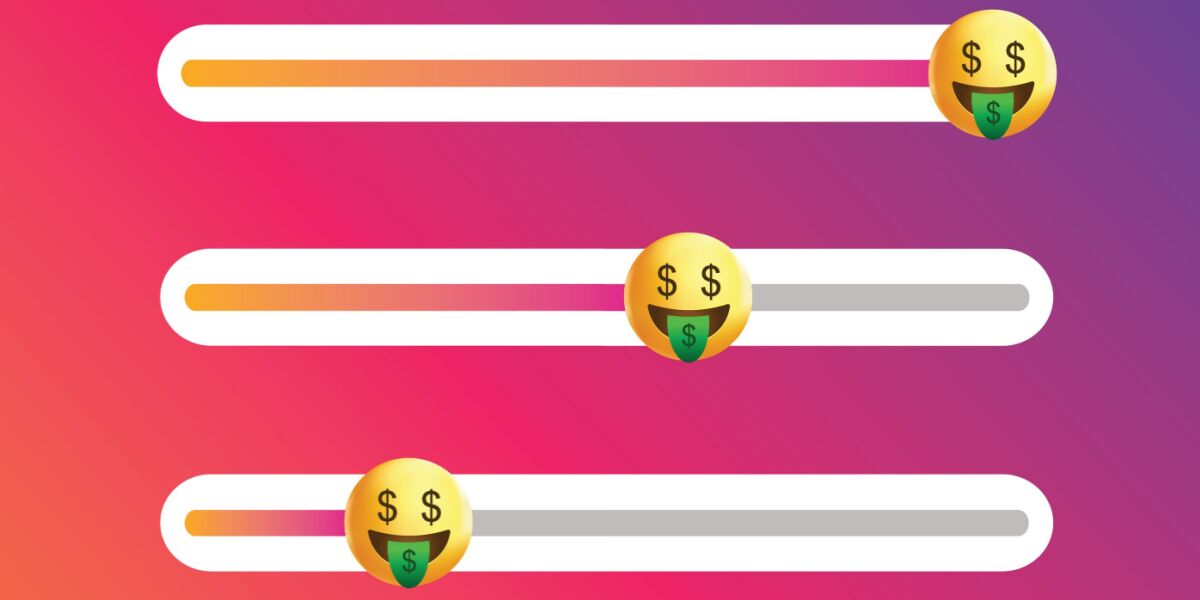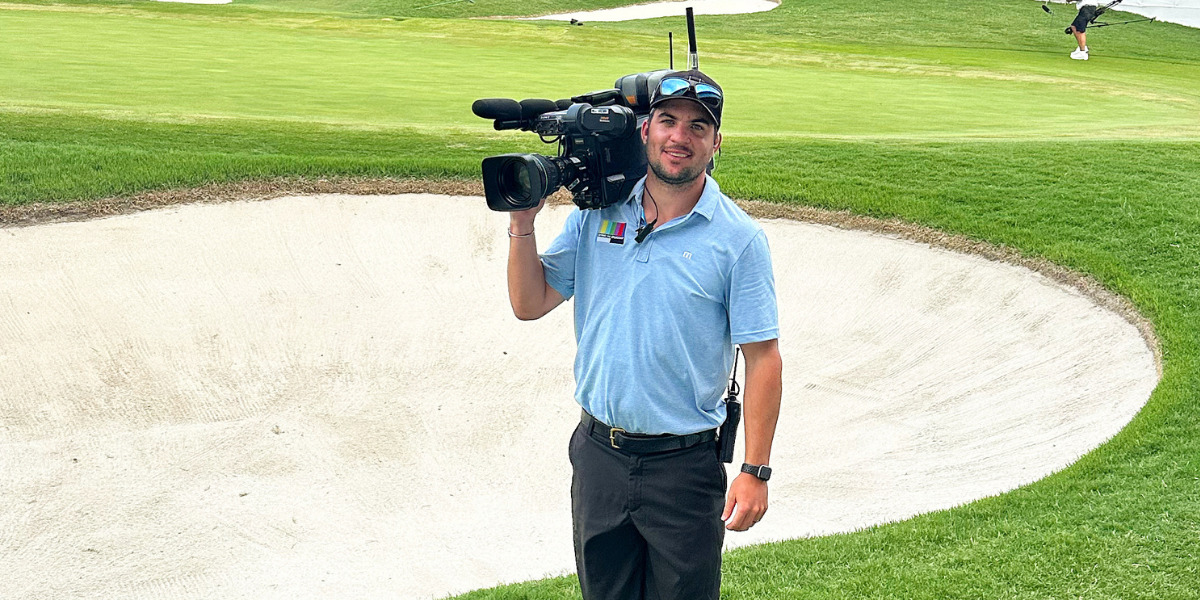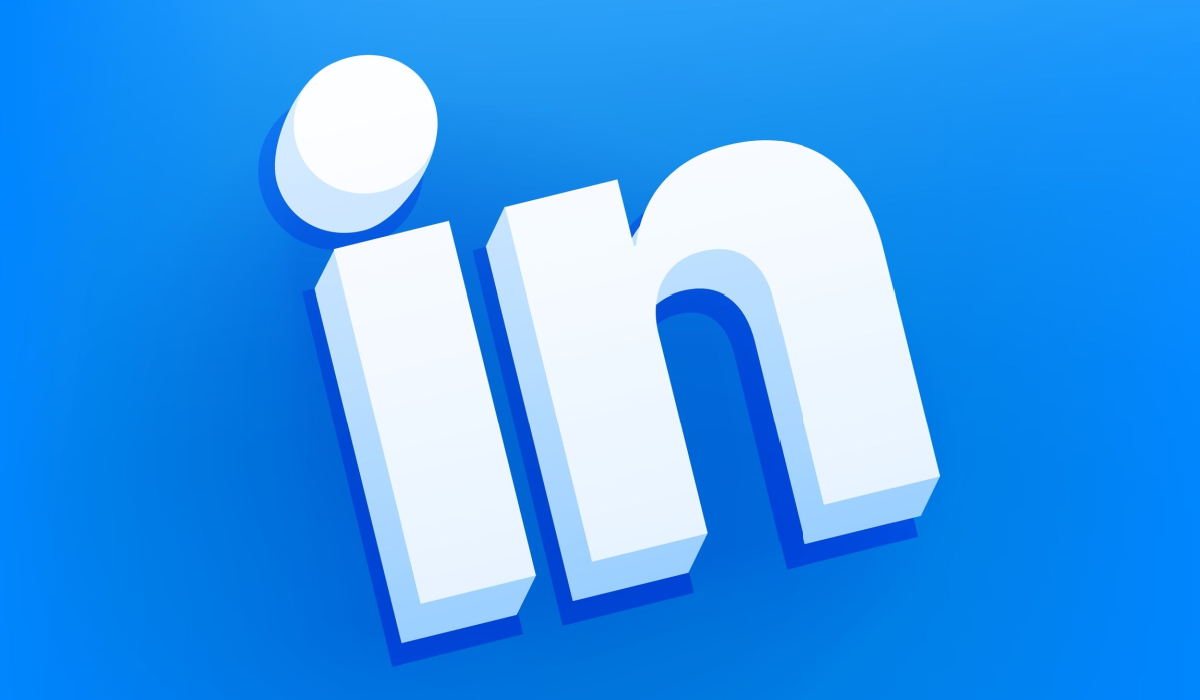Creating compelling Facebook ads is hard. With so many variables going into every ad, it’s difficult to know what makes each one good or bad.
Did the brand nail the timing and create an uber-relevant ad? Was the copywriting brilliant? Did they take advantage of incredible illustrations or video work?
It’s difficult to say. Sometimes, it’s a mix of all those things—other times, it’s a single element refined to perfection.
Pablo Picasso is frequently quoted saying: “Good artists copy, great artists steal.”
We couldn’t agree more, and that’s why we created this quick guide to the best Facebook ad examples. You don’t need to come up with something completely original—look at the best examples, get inspired, borrow their ideas, and make them even better.
Some things school just can’t teach you—and creating a great Facebook ad is one of them. To learn how to produce top-notch ads, you’ll need to analyze the best-of-the-best Facebook ad examples and dissect what works.
Facebook Ad Best Practices to Keep In Mind
Before we throw you headfirst into the best Facebook ad examples, let’s take a step back and discuss best practices. Most high-performing ads have a few things in common, and these are the elements we’ll break down below:
Pick the Right Type of Facebook Ad Format
Use the format that works best for your call to action (CTA) and brand. Facebook Stories ads let you use short, engaging videos or GIFs to engage your audience, and that might perform better than typical News Feed content.
If you don’t know what works best for your product or offer yet, experiment with small amounts of budget here and there. If you find something that works, try to scale it and see if it’ll continue performing. Consider using carousels, polls, video ads, story ads, Messenger ads, and more.
Let Facebook create high-performing ads for you with dynamic creative ads. Dynamic creative ads A/B test different combinations of text, titles, images, and CTAs to find the best converting ads—and it does it automatically without you having to create 50+ variations and compare results.
Keep It Short and Sweet
You can write a really long description copy for your Facebook ads, but the platform truncates your text with a “See More” tab at 140 characters. That means the casual scroller will only see the first few sentences of your text—they’ll have to click and take action to engage further.
Less is more when it comes to Facebook ads. Your customers aren’t typically on Facebook to shop sponsored posts. They’re likely there to interact with friends and family, enjoy some kicks and giggles, and get back to their day.
Your ads interrupt their feed and Stories—if you want to succeed, you’ll need to win their interest quickly before they swipe on past your ad.
Choose Power Words
If you’re going to follow our advice and keep your text concise, you’ll need to ensure it’s punchy. Be intentional about each word you choose. It should be powerful, on-brand, and action-driving. Need some more coaching on how to write for your ads? Sign up for our free copywriting masterclass.
Use Strong Visuals
Creative assets often require a chunky price tag, but they’re almost always worth the investment. Back your ads up with eye-catching illustrations and photography.
If possible, invest in video ads. You can create a top-notch video and split it up into multiple lengths and formats to work across different channels and placement locations. Video ads have higher engagement rates, meaning you’ll pay less for more interaction.
If you go the video route, ensure it’s vertical. Most Facebook users access the platform on their mobile device, meaning that’s the format you want to prioritize. And you can always use their platform edit tools to crop and adjust as needed.
However, analyze your audience—you may find your target market tends to use desktop more often. In that case, create ads primarily for desktop users.
Provide Value
Remember, every Facebook ad you show your customers is taking time away from what they really want to be doing on the platform. Ensure your post provides value.
Target your ads so that they’re hyper-relevant to your audience. Don’t waste your marketing budget showing soccer cleats to basketball players.
Always answer the question for your customer, “What’s in it for me?” Why should they click your link, sign up for your email list, purchase your product, or activate their free trial? Add those answers in your copy description and creative content.
Test and Track Your Ads
Before you invest your entire Facebook budget into an ad campaign, test it on a smaller scale. See what resonates with your audience and what doesn’t.
When you find a tactic, copy, and creative content that’s performing, start to invest more budget into it—however, don’t just set it and forget it. Track its performance day-to-day and week-to-week.
If your ad spikes in performance, try to see what’s making it work so that you can replicate your success with future ads. If it dips in performance, make adjustments quickly with your copy, placement, or targeting to ensure you don’t waste your advertising dollars.
8 Best Facebook Ad Examples
Can you guess my interests and hobbies based off of these Facebook ad examples? Don’t judge.
1. Facebook Stories Ad Example
Huel took to Facebook Stories to get their aesthetically pleasing brand in front of viewers. While the brand missed an opportunity to use interactive elements (stickers, GIFs, video, and the like), they nailed the story with a clean, eye-catching design.
Huel delivers on their products unique selling proposition (USP) and then backs it up with a competitive price point to cap off the ad. It’s straight to the point, on-brand, and a great example of power in simplicity.
Takeaways For You
- Stay on brand. Stick true to your colors, regardless of your ad format.
- Talk about what makes you different because there’s a good chance similar products will be targeting your same customers.
- Don’t be afraid to include your prices in the ad. For some brands, that’s the USP.
2. Influencer Ad Example
Alex Honnold, world-renowned big wall rock climber, partnered with Omaze to help raise donations for the Honnold Foundation charity. The ad uses Alex’s influencer status with the combination of his living style (the van) to get interested climbers and outdoor enthusiasts to stop and figure out what’s going on.
The ad delivers a compelling offer at the sacrifice of a small donation, and participants are further encouraged to participate since they’re giving to charity—and you never really lose a sweepstake when it goes to an honest charity.
Takeaways For You
- Partner with like-minded brands to double the effectiveness of your ads.
- Use influencers to tap into communities—consumers tend to trust influencers more than brands.
- When using contests, give participants a dopamine boost whether they win or not.
3. Ethos Ad Example
When you want something done, add some emotion to it. Imagine how ineffective this Facebook ad would be if they removed the ethos from it. It’d read something like, “Climate change is happening right now. Please tell Congress to help.”
That’s not nearly as powerful.
Look at the standout words The Wilderness Society used in the ad: threat, now, deadly, and demand—that’s action-inspiring copy. In bold red copy, the ad tells viewers exactly what to do: “Sign the Petition.” They also made sure the Facebook ad is set up to have a CTA button that coordinates.
Takeaways For You
- Add emotion to your ads to create a sense of urgency.
- Pick and choose your words carefully—they can pack a punch.
- Be clear with your CTA. Tell your viewers exactly what you want them to do.
4. Competitor Comparison Ad Example
Sometimes, a side-by-side comparison is all your customers need to push them over the edge and on to your side. The Atlas bar does a great job with this short video showing how their protein bar stacks up to the competition.
If your product beats out the competition, don’t be shy—let your audience know exactly why you’re the better choice. Don’t use vague phrasing. Be clear and direct.
For example, Atlas Bar doesn’t say, “We have more protein than the other bars.” Instead, they show that they have 3 more grams of protein than the competition. No hyperbole, no opinions—just facts.
Takeaways For You
- Show your audience why you’re the better choice compared to the competition.
- Don’t be vague about your claims—use numbers, facts, and data wherever possible.
- Speak to the talking points that are near and dear to your customers’ hearts.
5. Compelling Offer Ad Example
When you have an offer, don’t bury it—put it front and center. Stryve Biltong does a great job in this Facebook ad example of putting their discount on the very first line. It’s the first thing customers will read.
Admittedly, 20% off could be considered a weak discount for consumer goods like food and drink, but it’s better than nothing. Plus, the brand follows up the offer with selling points that are sure to get beef jerky fans pumped about their favorite snack.
Takeaways For You
- Make your offer clear and easy to find. The discount may be enough to push a buyer to complete the purchase.
- Make your product the hero of your brand. This ad is about 60 seconds long, and all it shows is the beef stick being cut from multiple angles—and it’s strangely satisfying to watch.
6. Engagement Ad Example
Noom takes a creative approach with their ad by adding an interactive element. The video alone is compelling enough, but they take it a step further with a quick poll asking participants, “What’s higher in calories?”
It seems like a simple thing, but the longer you get your audience to stop and interact with your ad, the more likely you’ll be to convert them now or later. Find ways to add interactivity to your ads. This could be through polls, Q&As, or even deeper engagement in the comments.
Takeaways For You
- Experiment with adding an interactive element to your ads.
- Combine videos with other elements to see if you can hook participants long enough to engage further.
- Notice how Noom doesn’t have a description? That’s because their ad does all the talking for them.
7. Creative Copy Ad Example
Creative captions combined with beautiful imagery make for a downright brilliant ad. Public Goods does a great job of keeping their copy short and sweet, while also using standout power words, like “free,” “natural,” and “protection.”
Everything from this ad ties together—from the copy in the description to the words on the ad to the “Insect Proof” title page at the bottom. If you’re not a confident writer, either hire a freelance writer or take our free copywriting masterclass. Don’t settle for subpar copy in your ads.
Takeaways For You
- Tie your ad together from start to finish with on-brand words that stick to a theme.
- Hire a freelance writer if you’re not confident making words flow together.
8. Strong Visuals Ad Example
When you have a beautiful product, make it the star of the show. Daily Harvest does a great job in this Facebook ad example of highlighting their pretty dishes. This doesn’t work for every brand, especially businesses that have a difficult time illustrating digital products or hard-to-describe services.
However, we have to give Daily Harvest credit. On a boring level, they could have featured a box—which is what customers receive on their doorstep. If your product or service isn’t easy on the eye, then consider illustrating the benefit or end result of your product (like happiness, confidence, or strength).
Takeaways For You
- Find ways to bring your product to life. If it’s pretty to look at, capture it with high-quality photography or video.
- Illustrate the end benefit of your product or service instead of the tangible goods.
Want to Build Off These Great Facebook Ad Examples?
These Facebook ad examples are just the beginning. When you sign up for our Facebook Ads Masterclass, you learn the step-by-step processes and blueprints for creating your very own high-performing ads.
Nick Shackleford is your instructor, and the man has spent over $100 million in Facebook advertising learning what works and what doesn’t. This course will accelerate your way to Facebook success and help you avoid the rookie mistakes that burn most small business budgets.
You don’t have to wait months or years to start turning a healthy profit on Facebook—you can start doing it right now. Sign up for the course to start dominating the world’s largest social media network.


